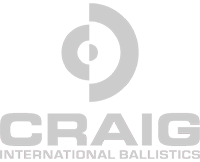HOW BODY ARMOUR WORKS
Body armour has been in use from the commencement of recorded history.
While it filled the practical purpose of protecting the wearer from the perceived threat, it has, on occasions become a form of adornment as well.
Armour has developed in response to increases in threat. Animal skin, bone and wood were followed by leather, chain mail and steel, culminating in the special fabrics, metals and ceramics in use today.
There are two forms of bod armour platforms:
- concealable armour
- overt armour
Covert armour is worn under the clothing and gives the wearer an element of surprise, as well as protection when attacked. The assailant does not normally expect the victim to survive.
Overt armour, is worn when surprise has been lost and the threat is evident to both sides. Its main function is to protect the wearer and can also be used to intimidate the opposition. The choice of colour, the style of the armour and the amount that is worn can give a distinct ascendancy to the wearer, as is evidenced by the appearance of a squad of fully protected riot police. Overt or tactical armour is normally used when a high threat level exists.
Overt armour may also have other practical functions; camouflage, MOLLE load carrying or visible identification; e.g. POLICE, SECURITY & CUSTOMS.
Steel has long been recognized as a suitable material to provide a high level of protection.
Even Ned Kelly, Australia’s most notorious bushranger used this form of protection. Lighter alternatives have been actively sought since the 1930’s. Flak jackets were used in the Second World War, Korea and in Vietnam. They were effective against shrapnel, but were not resistant against bullets, particularly rifle fire.
A breakthrough by the DuPont Company in 1965 saw the development of aramid fibres. Eventually, the fabric Kevlar® was produced. This is widely used today for the production of soft body armour and as part of a composite in hard armour applications.
Kevlar is made from extremely strong, but light synthetic fibres. These are twisted into threads and then woven into fabric. The tightness of the weave and the density of the thread varies dependant on the threat it is designed to defeat. Kevlar, and other similar ballistic fibres, work in the same way as a cricket practice net. The ball strikes the webbing of the net, which gives to some extent, absorbing the energy of the ball. If we use a wire net, only one layer is required and the ball will not penetrate. This is heavy and permanent. If we use a fibre net, we will probably need more layers to prevent the ball from going through, and to restrict the amount the net will move, when struck by the ball.
We use layers of ballistic fibre to match the energy of the projectile. The weave of the fabric acts like a net and gives, absorbing energy. The more threads which contact the bullet, the more effective is its stopping power. The bullet generally deforms, or mushrooms on impact, and thus contacts more threads. The armour cannot ‘give’ too much, because the wearer might survive the bullet wound, but suffer serious internal injuries from the mushrooming effect. This is called blunt trauma. This can be controlled either by the type of fibre used, or by using a combination of different fibres, with complimentary characteristics. The effects of blunt trauma are then spread over a wide area, reducing the effect on the wearer, to a safe level.
But what about armour piercing or jacketed ammunition? To defeat this threat, composite armour is used. Soft or fabric armour is bonded to hard armour, such as a ceramic plate. The bullet strikes the ceramic plate which stops it, breaking the bullet into fragments. The fabric absorbs the fragments and the energy. If fabric only was used, the bullet would penetrate it. If a ceramic plate only where used, it would shatter and the bullet fragments would penetrate. These plates are referred to by a variety of names including tiles, strike plates, hard armour plates [HAP] and small arms protective inserts [SAPI]. The latter is widely used by the United States Military.
Officers in corrective environments, police officers on the street and law enforcement officers in other cultures face an increasing threat from stabbing attacks.
The type of weapon can vary enormously from fabricated ice pick styles through to the Crocodile Dundee, “This is a knife”, scenario.
Earlier vests were composites, not very different in concept to medieval chain mail.
Conventional ballistic fibres are unsatisfactory as the threads are pushed aside by the tip of the stabbing weapon.
There are now fibres available which are very fine but strong. They are woven in such a way as to prevent the blade from puncturing the fabric and cutting it.
Dependant on the level of threat, it is possible to have a vest which supplies both stab and ballistic protection. This can be achieved by using multiple layers of the new fabric, or by using the new fabric in combination with traditional ballistic fabrics.
A study by the United States Federal Bureau of Investigation has shown that wearing a protective vest increases a law enforcement officer’s survivability chances by 40%.
This means wearing the vest at all times when on duty. Selecting the right armour is very important under these circumstances. The principles in selecting the right armour are the same, whatever your circumstances.
Firstly, determine the level of threat. Is it knives, hand guns or rifles? Consult the NIJ Standards chart to decide on the threat description you require; NIJ Level II or Level IIIA for example. A major mistake is to select body armour at levels higher than the threat. Generally, the higher the protection level, the more uncomfortable the armour becomes.
Secondly, will I need a covert, overt or tactical vest? If you will wear it at all times, you will normally need a covert vest. Covert vests are only built to a maximum of NIJ IIIA, but can be upgraded for specific circumstances with small strike plates. Overt and tactical vests are normally capable of having full size strike plates inserted both front and rear, either permanently or for specific threats. Vests are sometimes referred to be acronyms; OTV or outer tactical vest and BRV, bullet resistant vest.
Thirdly, you need to determine if you need any options with your armour; strike plates, collars or groin protectors, decals, emblems or pockets. Vests also come in a variety of colours and sizes.
Lastly, it is critically important to ensure that the vest will fit comfortably, provide the right level of protection but still allow you to perform your duties effectively. Use our template to provide us with accurate measurements so that we may tailor your vest to suit.
Further reading – NIJ Selection and Application Guide to Personal Body Armor.
In these troubled times it is important that those whose duty it is to protect us, are well protected themselves.
Choosing the correct style and level of protection can be a confusing exercise.
At Craig International Ballistics, we are committed to helping you make the right decision.
We are only an email or a telephone call away.
Explore the Possibilities
CONTACT US
Craig International Ballistics
+61 7 5563 1099
PO Box 3609 Helensvale Town Centre, Queensland 4212 Australia


